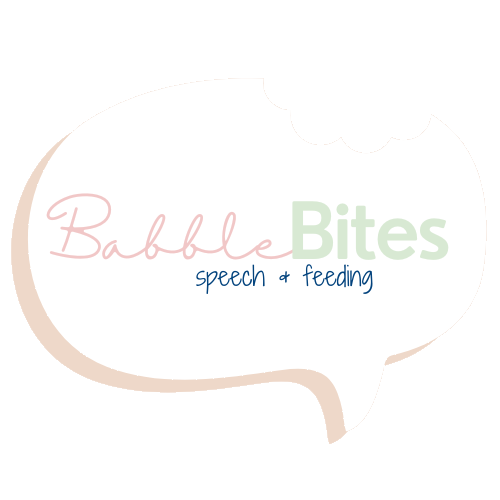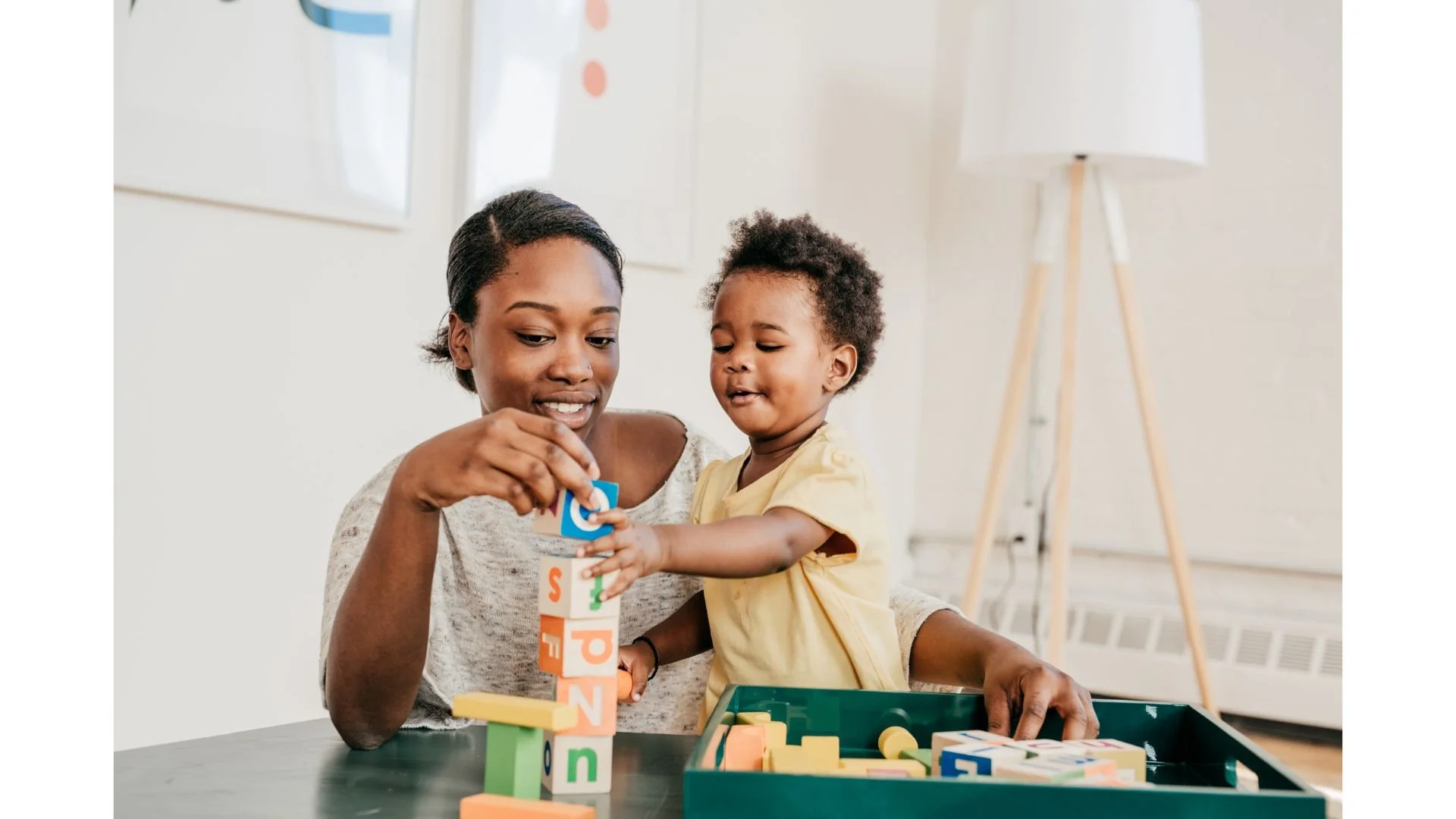What to Say While Playing With Your Toddler to Boost Language Skills
Instead of asking a question like, “What’s this?” or “What color is this?” Try modeling, “block on!” or “up, up, up” to boost your toddler’s language skills through play.
You’re a new parent. You know it’s good to play with and talk to your toddler…but then you sit down on the floor, toy in hand, and your brain goes blank.
“What am I supposed to say?”
Don’t worry—you’re not alone. If you haven’t spent much time around kids before, it can feel awkward trying to fill the silence. The good news? Talking with your toddler doesn’t have to be complicated. A few simple shifts in how you chat during play can make a huge difference for their language growth.
Common Mistakes Parents Make When Talking to Their Toddlers
As a pediatric SLP, here are the three most common mistakes I see all the time when it comes to parents talking with their toddlers during play:
1. Asking too many questions.
It’s natural to want to quiz your toddler: “What’s this? What color is that? What does the dog say?” Asking questions is what gets them to say more… right? But when children are just learning to talk, they don’t always know the answers yet. It can feel like a pop quiz they’re failing, under pressure to perform, which often makes them shut down. What they really need is for you to model the words instead, which will teach them the words they need to answer questions in the future.
2. Not engaging enough.
Life is busy. Maybe you can’t always sit down for a full-blown play session. That’s okay! Narrating what you’re doing during daily routines (mealtime, bath time, getting dressed) is also extremely beneficial for their language development
3. Talking too much.
Yes, toddlers need a language-rich environment—but they also need opportunities to communicate! Make sure you pause and give your child chances to express themselves, whether that’s with gestures, sounds, or words.
What not to say:
✖️What’s this?
✖️What’s that?
✖️What color is this?
✖️What does the [animal] say?
✖️Where’s the [toy]?
✖️What are you doing?
✖️What’s the [toy] doing?
✖️How many is this?
What to say instead:
✔️Label the objects you’re playing with (e.g. cow, apple, block)
✔️Label the actions you and your child do with toys in play (e.g. eat, sleep, jump)
✔️Talk about what you and your toddler are doing (e.g. You put the block on top! I put the cow in the barn)
✔️Use single words, phrases, and sentences (e.g. frog, frog hop, the frog is hopping!)
✔️Repeat words and phrases (e.g. put in, put in, put in)
✔️Use verbal routines and see if your toddler can fill in the blank (e.g. ready, set…go!)
✔️Give verbal/visual choices (e.g. Do you want the car or bus? Car or bus?)
✔️Make sound effects (e.g. beep beep, moo, baba, meow, vroom, rawr)
Real-life Examples:
✔️Look a dog!
✔️Hi dog
✔️Woof woof!
✔️I have a frog. Frog is hopping, hop hop hop!
✔️You have a cat, meow, the cat is sleeping, night night cat
✔️You put the cat in her bed.
✔️On top, on top, on top
✔️Put in, put in, put in
✔️Ready, set…go!
✔️Up, up, up!
✔️Look it’s a bus! Beep beep
✔️Drive the bus
✔️Yellow bus
✔️Go bus, go!
✔️Do you want the bus or the car? Bus or car?
✔️Do you want the horse or cow? Horse or cow?
✔️Jump!
✔️Cow is eating, cow eat, nom nom nom
✔️The cow says moo, the cow says moo, all the animals make a sound the cow says… (pause and see if your child fills in the blank!)
Key Take-Aways
When talking with your toddler during play:
Don’t fall into the “question trap.”
Focus on labeling objects and actions.
Use sound effects (the sillier, the better).
Mix short words/phrases with full sentences.
Pause and let your toddler take a turn.
Simple, right? Less quizzing. More modeling. Lots of fun noises. And plenty of space for your toddler to jump in and work on their communication skills.
Follow us on Instagram for “bite-sized” information on language strategies:
This website and information on this blog post is provided for educational purposes only. It is not meant as medical advice, intended to replace a speech-language assessment, therapy from a speech-language pathologist, or serve as medical care for a child. It is recommended that you discuss any concerns or questions you might have with your speech-language pathologist, pediatrician, and medical team, and develop an individualized team plan specifically for your child.

